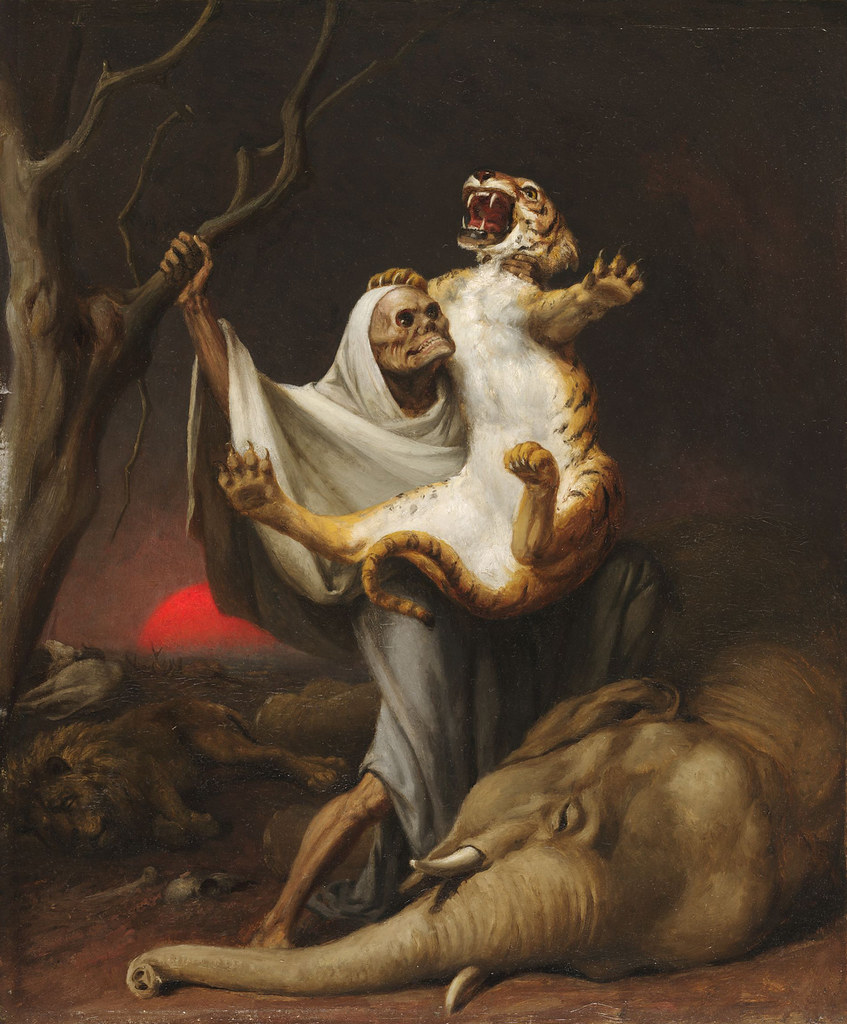 Power of Death, 1889-90
Power of Death, 1889-90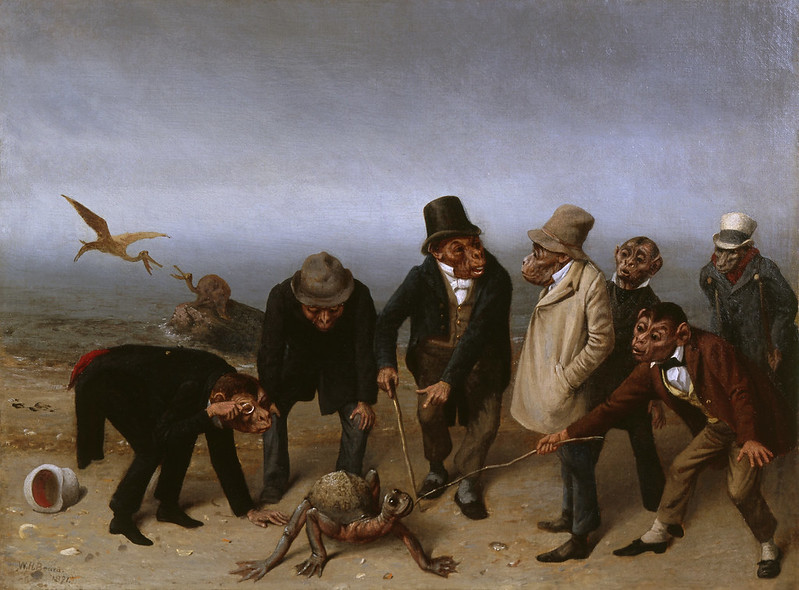 The Discovery Of Adam, 1891
The Discovery Of Adam, 1891 It Rains It Shines, The Devil Whipping His Wife, 19th C
It Rains It Shines, The Devil Whipping His Wife, 19th C The Fox
Hunter's Dream, 1859
The Fox
Hunter's Dream, 1859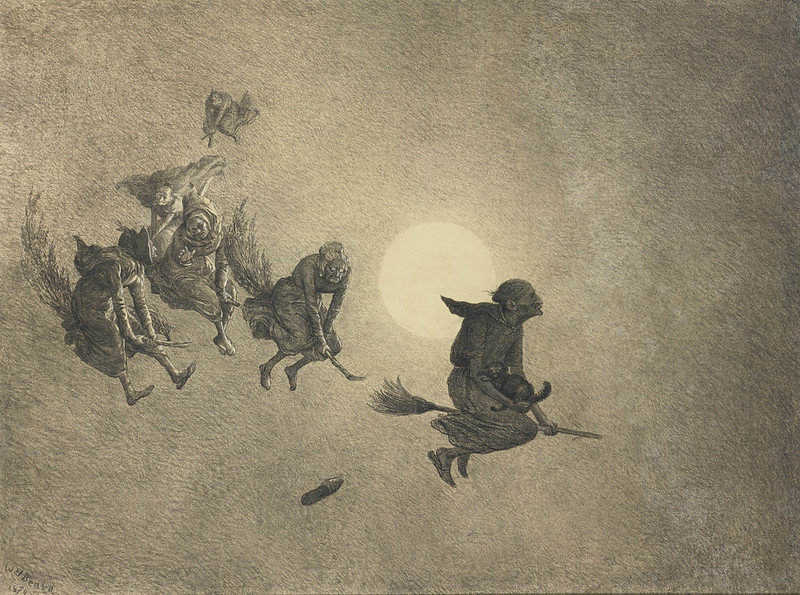 The Witche's Ride, 1870
The Witche's Ride, 1870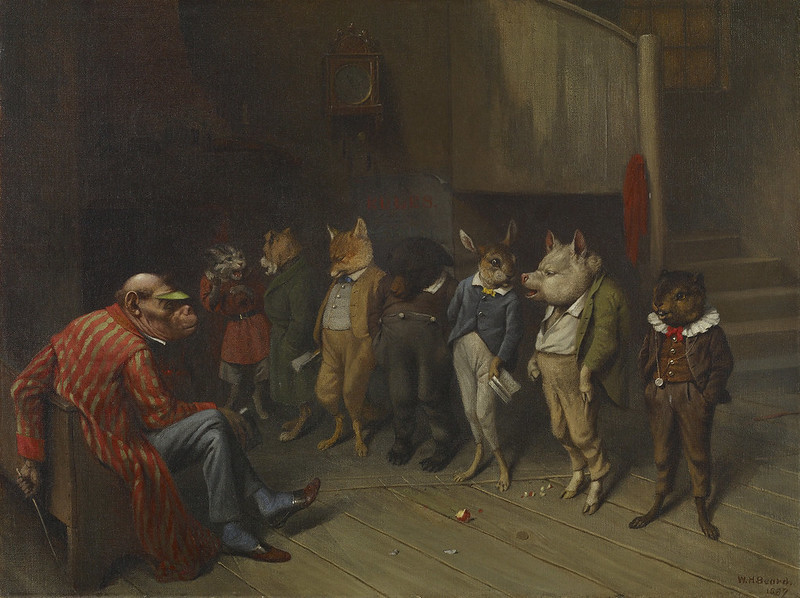 School Rules, 1887
School Rules, 1887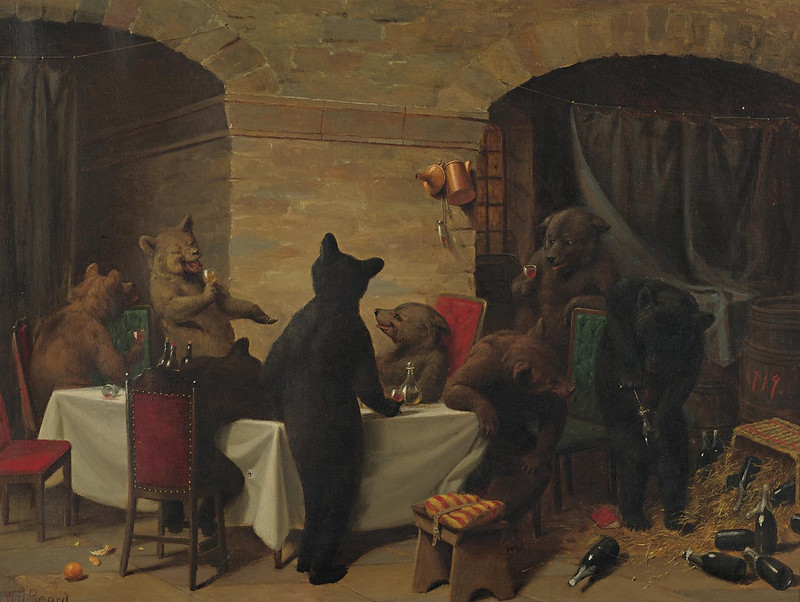 Bear Carousal, 1870
Bear Carousal, 1870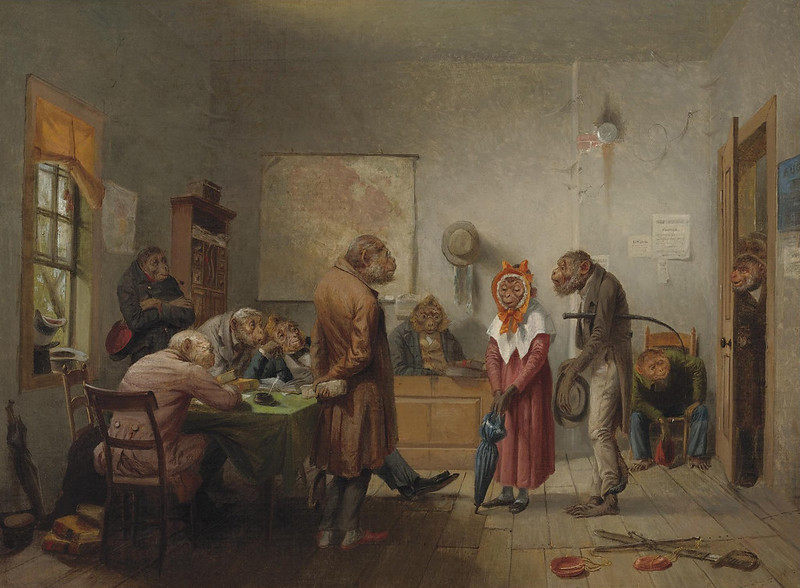 Divorce, 19th C
Divorce, 19th C The Four Seasons, Winter, 19th C
The Four Seasons, Winter, 19th C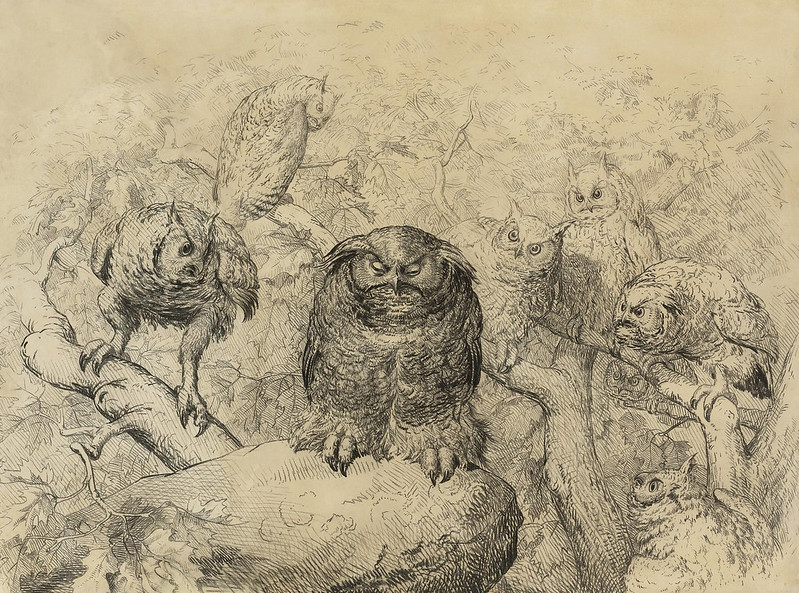 Minerva Reflecting, 1870
Minerva Reflecting, 1870"William Holbrook Beard (1824-1900), was born into a family of portrait, animal, landscape, and genre painters in the small town of Painesville, Ohio, near Cleveland. He is best known for his satiric genre scenes featuring animals as stand-ins for human beings behaving badly. He frequently used bears as protagonists. The present work is less anecdotal, and more hauntingly compelling than many of his satirical works. In the upper scene, an innocent child has happened upon a peculiar wooden grate on the ground in a clearing of a misty field. Noises from below the strange construction attracted the child's attention and led him to kneel down and listen. In the lower, underground scene, which is rendered in an entirely different palette of earth tones and fiery furnace reds, Beard has painted a scene of a devil flogging his wife. Reminiscent of the work of Salvator Rosa, the subject is doubtless related to a literary source, but has a painterly rather than illustrational quality.
Basically self-taught, the young artist began his career painting with his older brother James Henry Beard, and then worked for several years as an itinerant portraitist in his home state. He moved to New York City in 1845, but by 1850 left the larger metropolis for Buffalo. There he established a studio and became close to a group of successful artists including portraitist Thomas LeClear (whose daughter he married) and Swedish-born landscapist Lars Gustave Sellstedt, Buffalo's principal mid-century painter. Beard remained in Buffalo until 1856, the year he left for a two-year tour of Europe. He traveled extensively, and met and painted with many American artists including Emanuel Leutze, Sanford Gifford, Worthington Whittredge, and Albert Bierstadt. Upon his return to the United States, he spent two more years in Buffalo before settling into apartments in the Tenth Street Studio Building in New York, home to many of the nation's most celebrated painters. After his return from Europe, Beard concentrated upon satirical animal subjects. As William Gerdts has noted, "One of his most characteristic and controversial of such paintings was his March of Silenus (Albright-Knox Art Gallery, Buffalo, New York), a classical theme reinterpreted with a drunken bear attended by an entourage of goats, which led to the artist's election as National Academician in 1862."
In 1866, he traveled West by train to explore the landscape, and in Colorado his companion was Bayard Taylor, a writer and lecturer. During the trip, he wrote home to his wife that the landscape was monotonous, that he was disappointed in seeing so few buffalo, and the life out West was too hard. As a result of the trip, his wanderlust was sated, and he turned increasingly to his imagination as the source of inspiration for the habits and environments of his wildlife subjects. Many of his later paintings showed animals as physically realistic but atypical in terms of their behavior." - quote source
Artworks found at Heritage Auctions and Sotheby's.
William Holbrook Beard was previously shared on Monster Brains in 2008.

1 comment:
Rather enjoy the painting of the devil beating his wife. Heard that phrase for the first time a few years a ago when looking at a regional dialect study. In the United States it's primarily used in parts of the south to describe Sun showers. Later found the phrase has similar usage in France and a few other countries.
Other than that I like "The Witch's Ride. God help me I can't resist a good witch painting.
Post a Comment